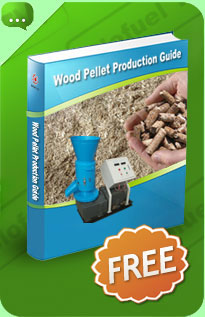Feed Pellet Mill
Feed pellet mill is used to produce animal feed pellets. Before wood pellet fuel, the predominant use of the pellet mill was for the animal feed industry.
There are several reasons the animal feed industry choose pellets, many of the reasons are similar to the advantages of wood pellet fuel. With a feed pellet mill it is possible to create specific feed blends for specific animals. Blends of different minerals and vitamins can be added to the raw feed mix in specific quantities. This way the animals intake can also be precisely controlled so they have enough, but not too much. Also in pellet form it is much easier for the farmer to ration out the correct amount of feed per day.
The other benefits of processing animal feed in a feed pellet mill are very similar to wood pellets. Due to increased compression, much more feed can be stored in one location. Also the feed stores much better, keeping the feed in a good condition. Also the increased compression and reduced volume of the feed means it’s possible to transport more per vehicle. This means reduced transportation costs.
Pellet Mill
There are several different designs of pellet mill. At the beginning of the 20th century when the first pellet mills were used for feed pellet production, a flat die design of pellet mill was used. The flat die design is still used in feed pellet production today; however other designs are now also common.
The pellet mill comprises a set of rollers and die, as material enters the pellet mill it is compressed through the holes in the die to form the pellet shape. This is an extremely simplified version of the process, as in reality several factors impact on the process and the ability to produce quality pellets. The guide goes into these areas in detail.
Pellet Equipment
As well as the pellet mill, there are various other pieces of equipment used in pellet production. In many cases the first piece of equipment used is the hammer mill. A hammer mill works on attrition, and the speed of the hammers impacting on the raw material reduces it to a small uniform size, usually a few millimetres.
The diameter of the particles required, depends on the size of pellets produced. Generally though, the size of the particles must be smaller than the size of the pellet produced. So for example to produce 6mm pellets, particles below 6mm are desired for the pellet mill. The pellet mill may also be referred to as a pellet machine or pellet press, all terms are acceptable.
Pellet Production Guide
The pellet production guide covers the process step by step. This includes raw material size reduction, material preparation, pellet compression etc. It also includes information on the advantages and disadvantages of different designs of pellet mill.

